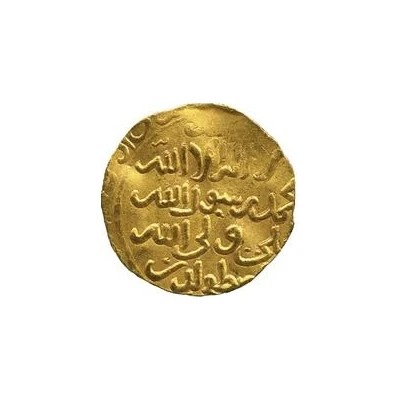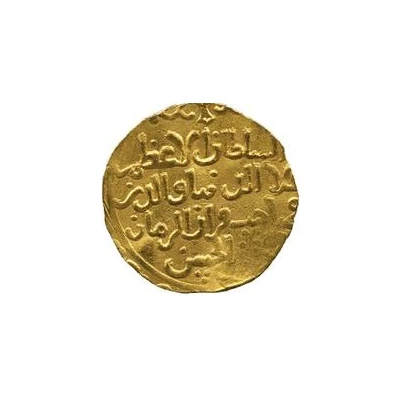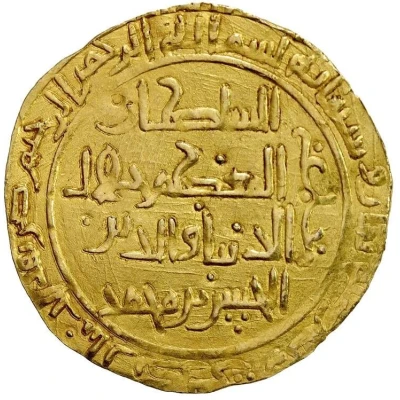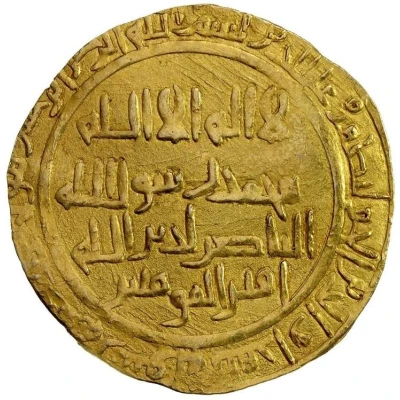


Dinar - 'Ala al-din Muhammad III ND
| Gold | 5 g | 19 mm |
| Issuer | Alamut State (Greater Iran) |
|---|---|
| Imam | Ala al-Din Muhammad III (1221-1255) |
| Type | Standard circulation coin |
| Years | 1221-1255 |
| Value | 1 Dinar |
| Currency | Dinar (1090-1275) |
| Composition | Gold |
| Weight | 5 g |
| Diameter | 19 mm |
| Shape | Round (irregular) |
| Technique | Hammered |
| Demonetized | Yes |
| Updated | 2024-10-05 |
| Numista | N#81437 |
|---|---|
| Rarity index | 97% |
Reverse
Script: Arabic
Lettering:
Field:
al-sultan al-a / ‘zam / ‘ala al-dunya / wa’l-din muhammad ibn / al-hasan
Margin:
a’l-dinar bi-kursi al-daylam fi (sana khamsin wa sittmi‘a)
Translation:
Field:
the Supreme Sultan Exalted of the World and the Faith, Muhammad ibn al-Hasan
Margin:
this dinar was struck in Kursi al-Daylam in (the year fifty and six hundred)
Comment
The sixth Batinid ruler, Jalal al-Din al-Hasan III ibn Muhammad II rejected the isolation of the Isma‘ilis and the concept of qiyama that had been imposed on them by al-Hasan II. His subjects accepted him as their imam, but, perhaps because his mother was a Sunni, he introduced the Sunni shari‘a and instructed every village in his domains to build a mosque.All the Isma‘ili territories obeyed al-Hasan’s orders, and he became a celebrated hero, not least because his actions brought an end to attacks from Sunni states at a time when the Mongol advance was a serious threat.
Al-Hasan’s son, ‘Ala al-Din Muhammad III, ascended the throne at the age of nine and reigned for thirty-one years.
He saw himself as the Isma‘ili imam, but under his rule the shari‘a was less strictly enforced, and the qiyama was revived. It was explained to the people that the qiyama, meaning “Resurrection”, was not a final event, but rather the process of attaining spiritual perfection. This is why the Isma‘ili community was able to survive for centuries, in spite of the fall of their state to the Mongols. The present Agha Khan, leader of the Isma‘ili community, claims descent from Muhammad III.
The Isma‘ilis had been enemies of the Saljuqs, and then of the Khwarazmshahs, who, by the time of Muhammad III’s accession, had been destroyed by the Mongol forces of Chingiz Khan (Genghis Khan).
While the Isma‘ili’s prudently submitted to Chingiz and, as a result, were left in peace in the mountainous land of Rudbar, they are reported to have sent emissaries to France and England to encourage an alliance of Christians and Muslims to withstand the Mongol advance.
This dinar, struck three years before Muhammad’s death, bears the Shi‘ite kalima with the ruler named as “The Supreme Sultan, Exalted of the State and the Faith, Muhammad ibn al-Hasan”. It is inscribed in a particularly attractive and original calligraphic style, with an arabesque-like design above the obverse field.
Interesting fact
One interesting fact about this coin is that it was issued during the reign of 'Ala al-din Muhammad III, who was the ruler of the Alamut State, a Nizari Ismaili state that existed in what is now Iran and Syria, during the 13th century. The coin is made of gold and weighs 5 grams, indicating the high value placed on gold during that time period. Additionally, the fact that it was a standard circulation coin suggests that it was widely used in trade and commerce, highlighting the importance of the Alamut State as a major economic power in the region.

